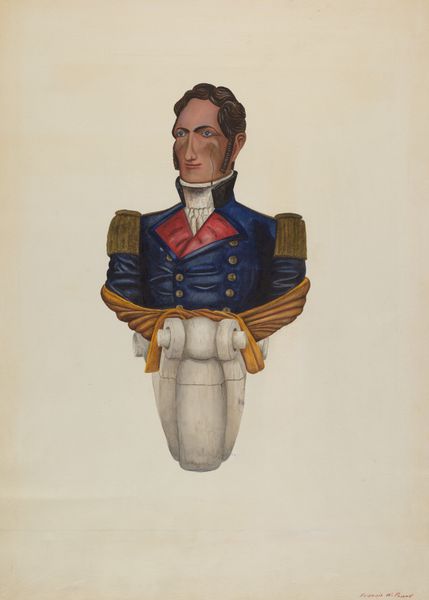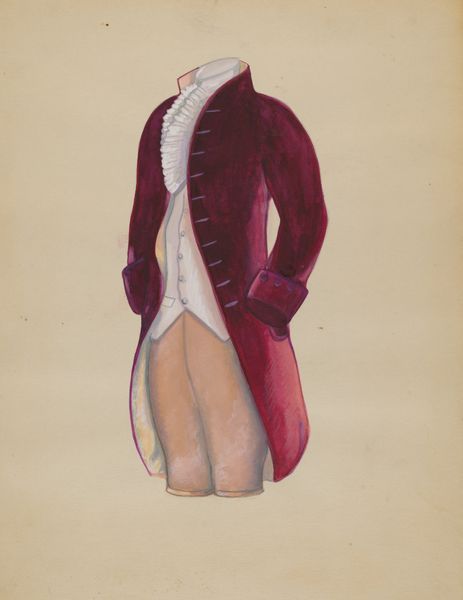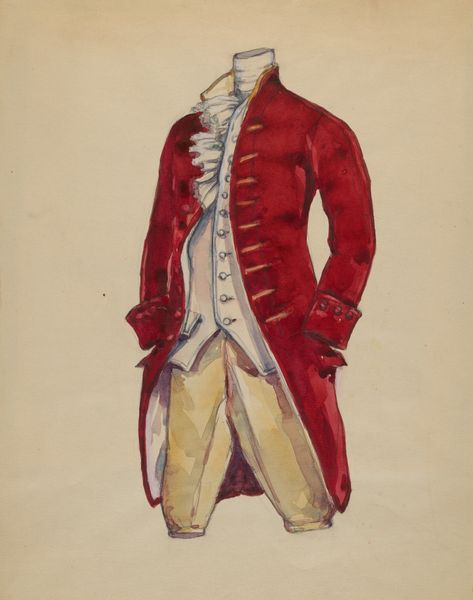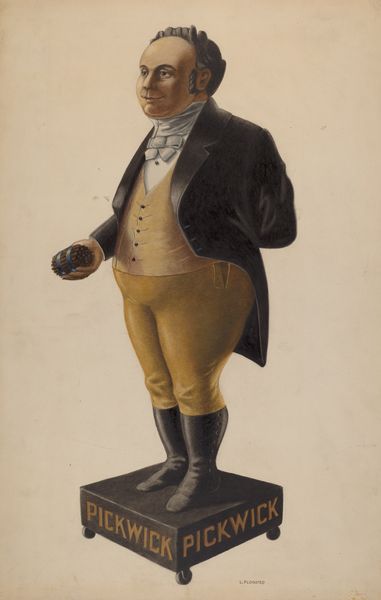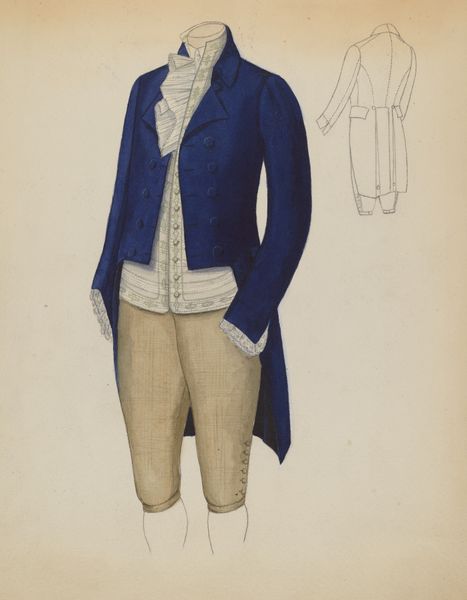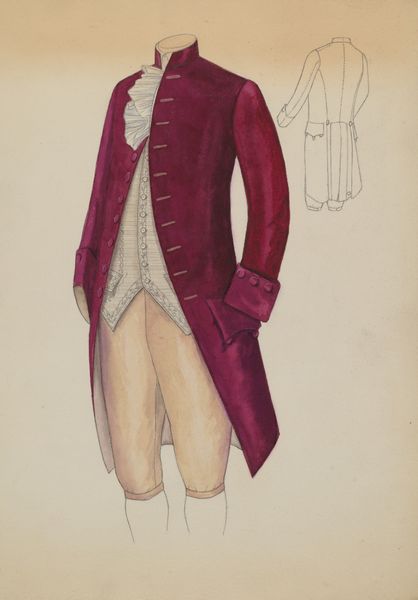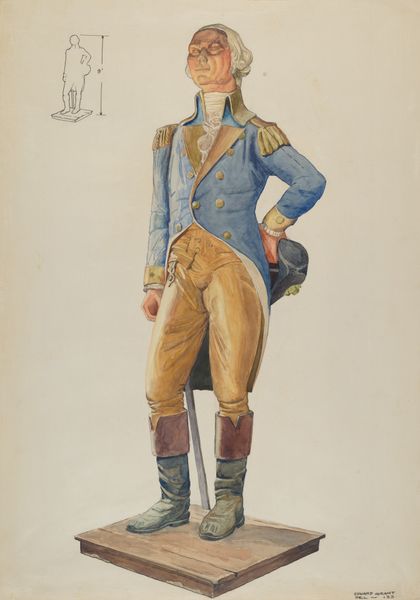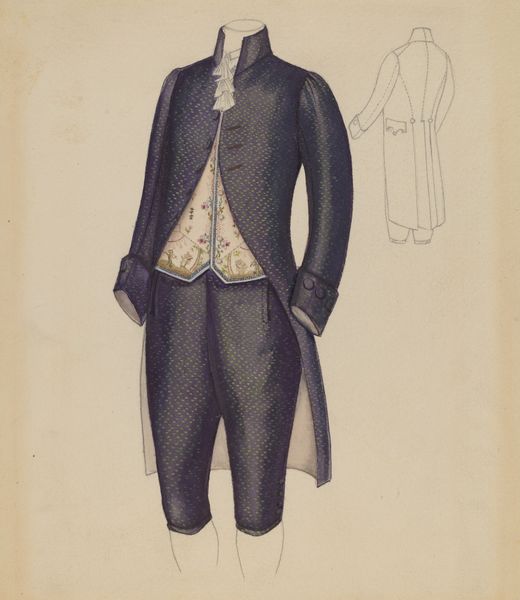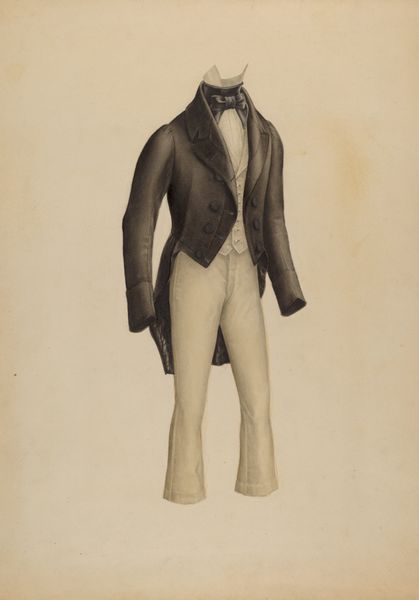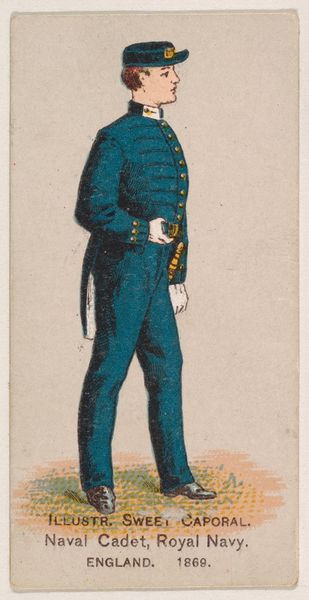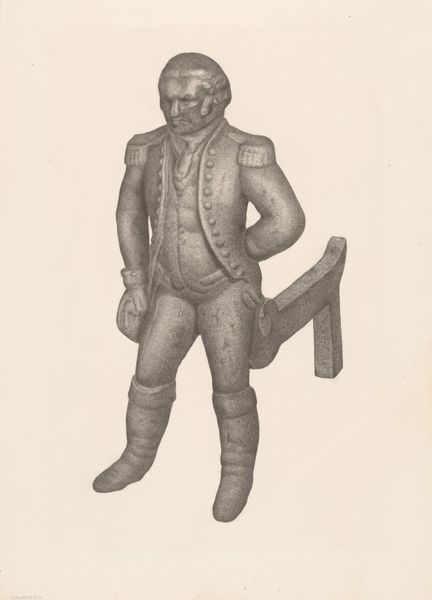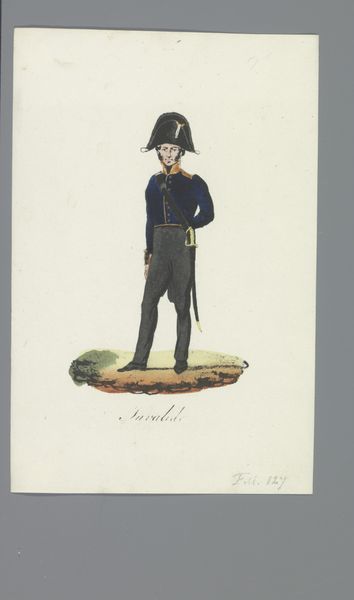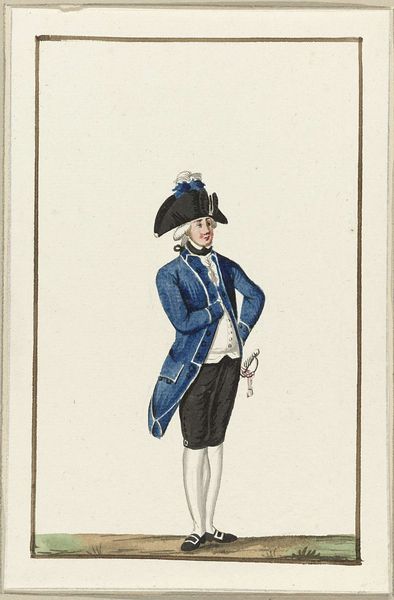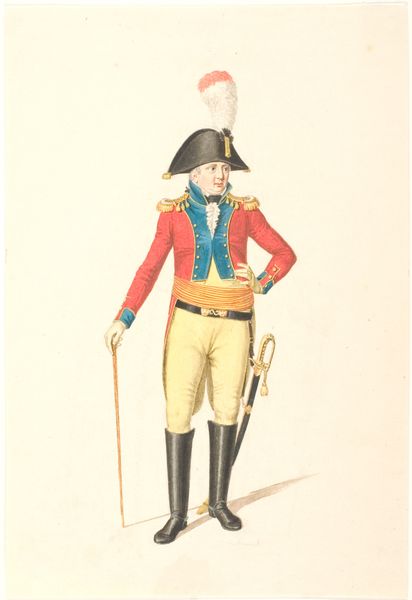
drawing, carving, sculpture, wood
#
portrait
#
drawing
#
carving
#
caricature
#
sculpture
#
wood
#
portrait drawing
#
watercolour illustration
#
genre-painting
Dimensions: overall: 45.9 x 36.1 cm (18 1/16 x 14 3/16 in.)
Copyright: National Gallery of Art: CC0 1.0
Editor: This is Marian Page's "Ship's Figurehead" from around 1941. It seems to be made from wood and some kind of paint. The subject, a man, almost has the quality of a drawing or caricature but exists as a sculptural object. What's your read on this? Curator: Well, it's fascinating how a folk art tradition like ship figureheads intersects with portraiture. These weren't just decorative; they were powerful symbols of the ship’s identity, even a kind of public performance of national pride and mercantile ambition. Given that it's 1941, can you think of how social and political elements of the time affect this artwork's impact? Editor: Perhaps it speaks to a sense of wanting to embody strong figures, almost heroically so, during wartime? The idealized portrayal and sense of grandiosity seems intentional. Curator: Exactly. And consider who these figureheads represented. Often, they were modeled after prominent individuals or mythological figures, embodying ideals of leadership, strength, or even a nation's aspirations. The commissioning of such a piece says a lot about the values held by the ship's owners, right? What does the portrayal indicate, what message is to be delivered in those representations? Editor: I guess you're right that what the figurehead represents to the public back then has the most cultural and social impact on this. Curator: Precisely, this figurehead is more than just art, it's about the societal reflection. And what about us now looking back on it; what statements do you believe this work makes to a current audience? Editor: I never really thought about figureheads in that light. Seeing it as a public symbol that reflects a ship owner's, and perhaps a nation's identity and values during that specific time period gives it more meaning. Thanks! Curator: Indeed. And that intersection of art, identity, and public performance makes it a potent object of study!
Comments
No comments
Be the first to comment and join the conversation on the ultimate creative platform.
